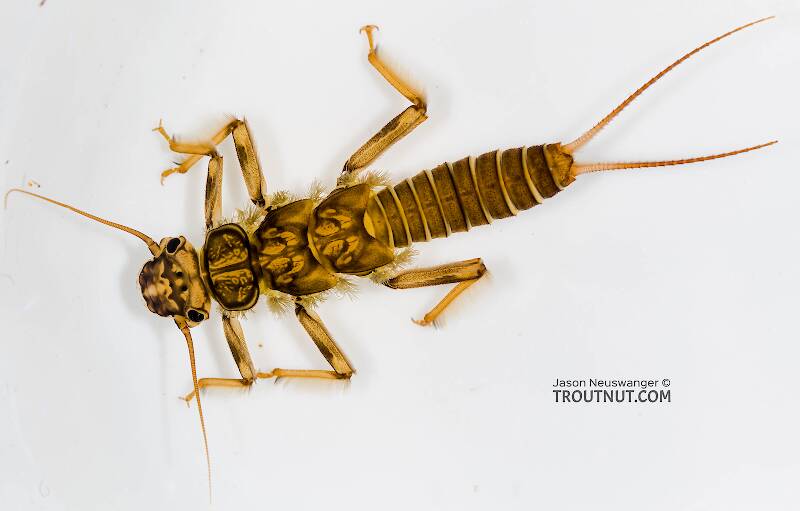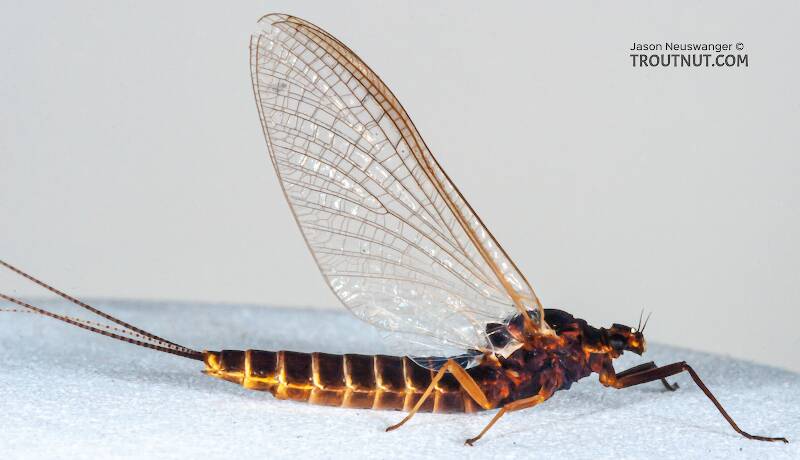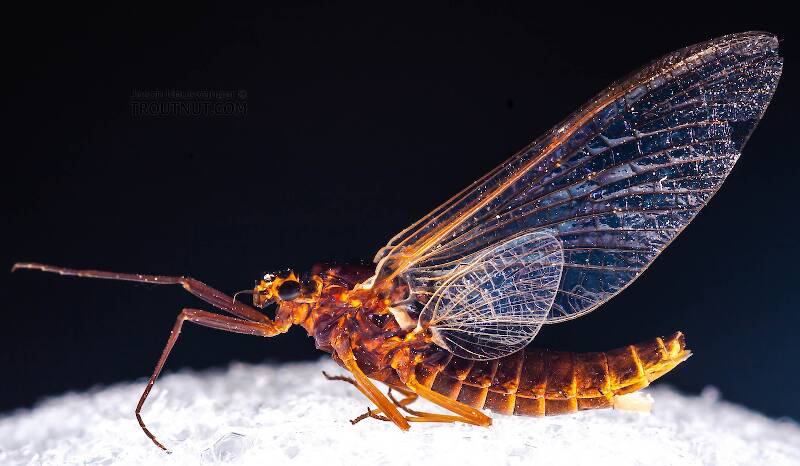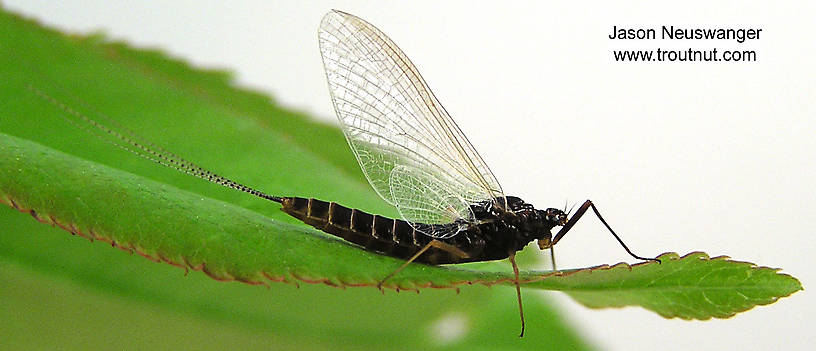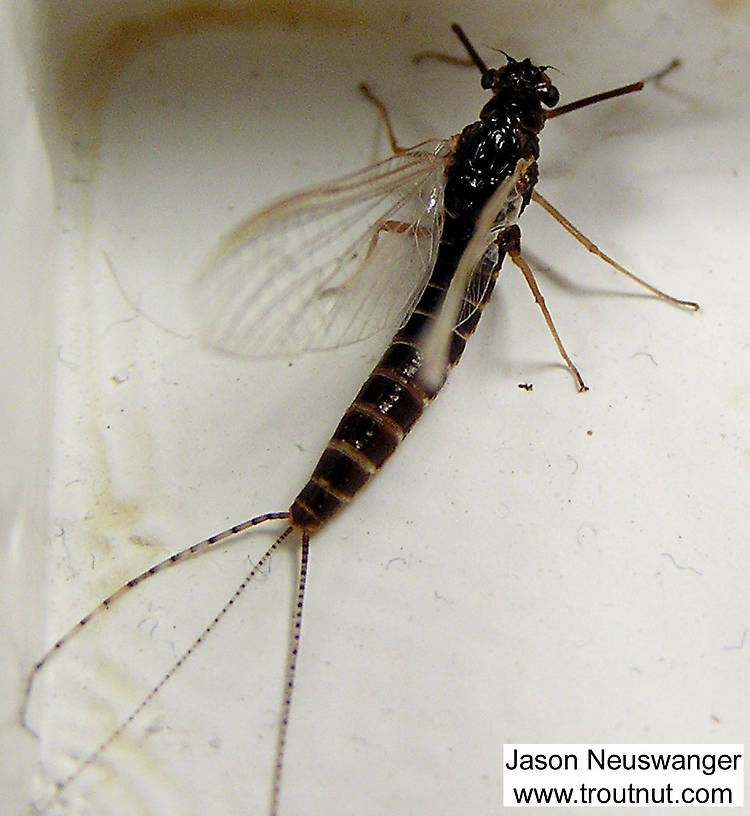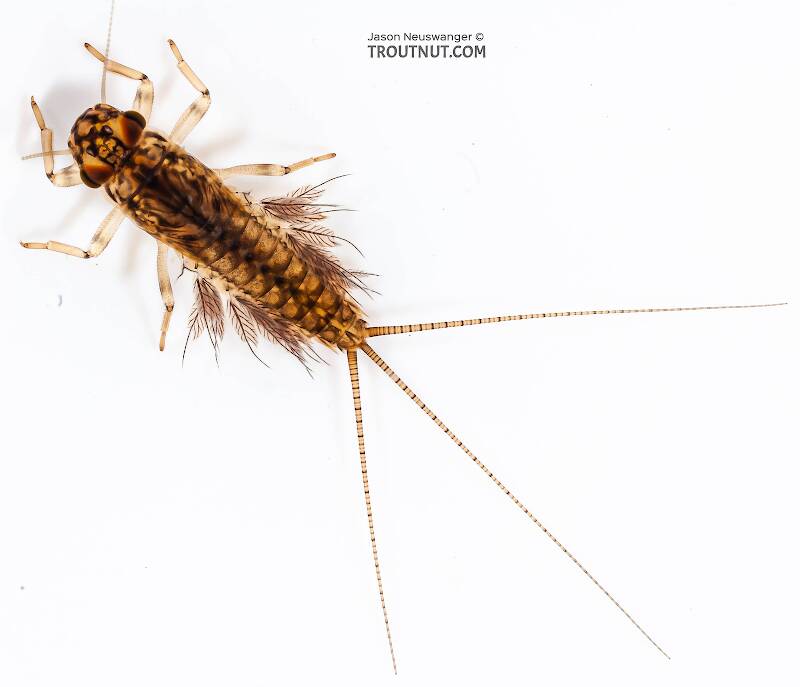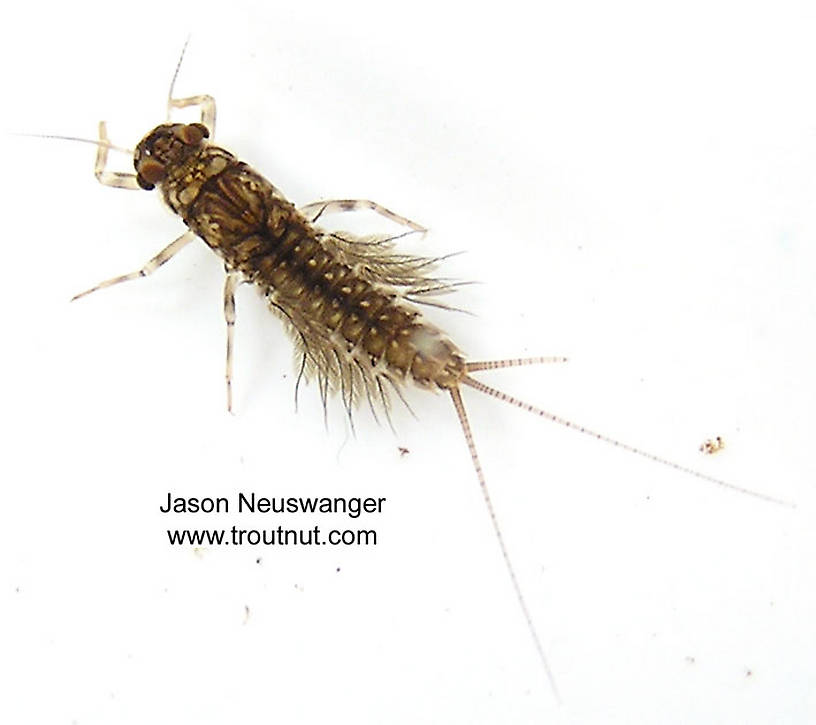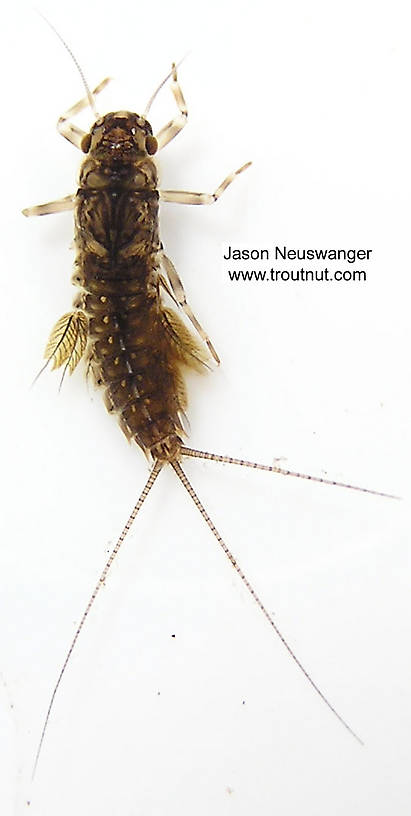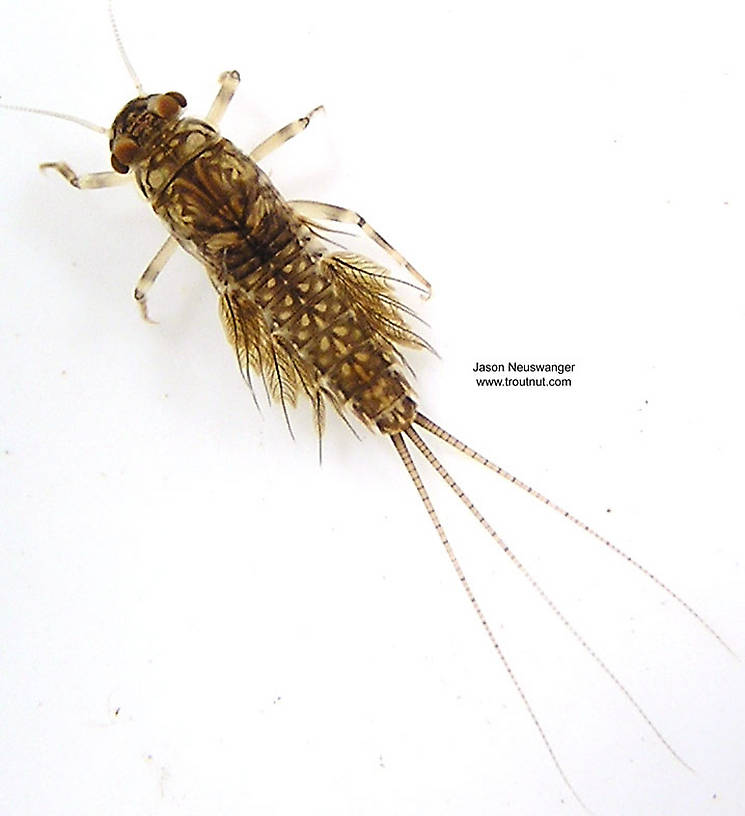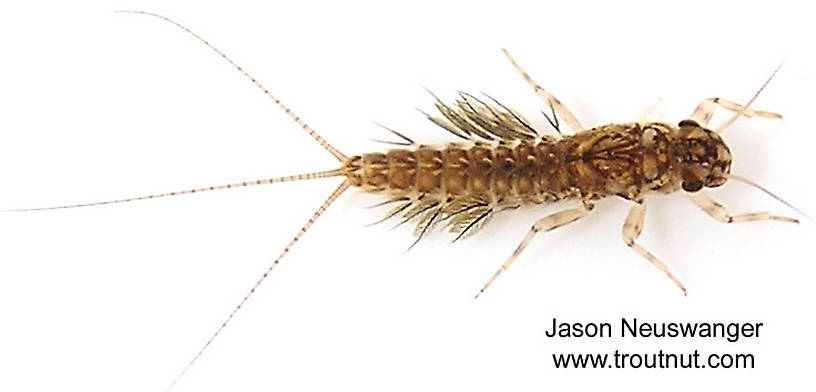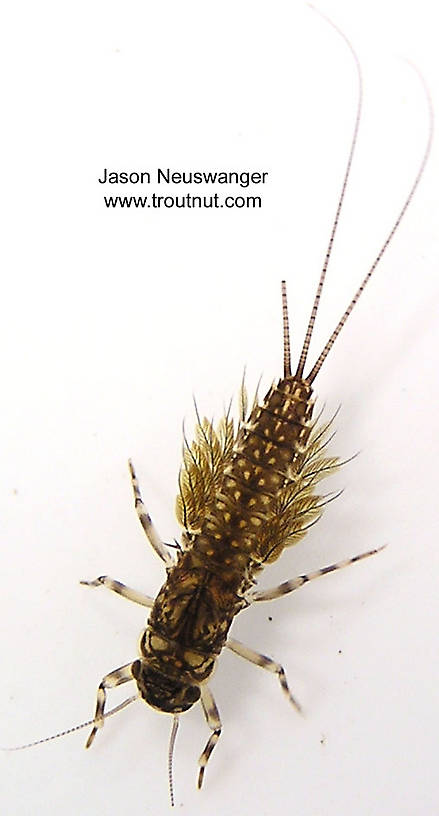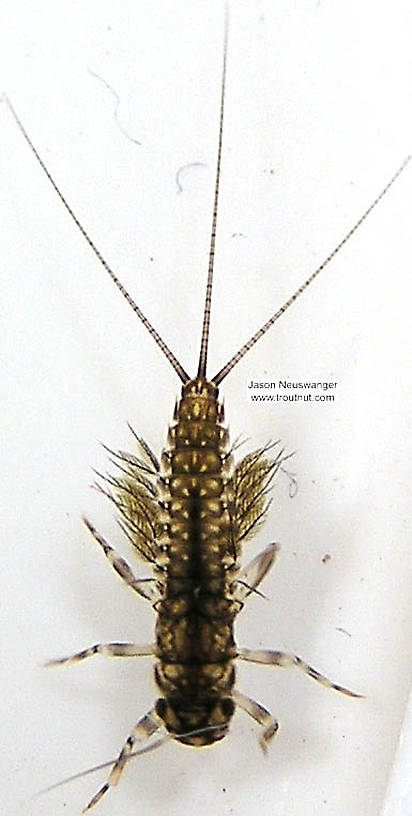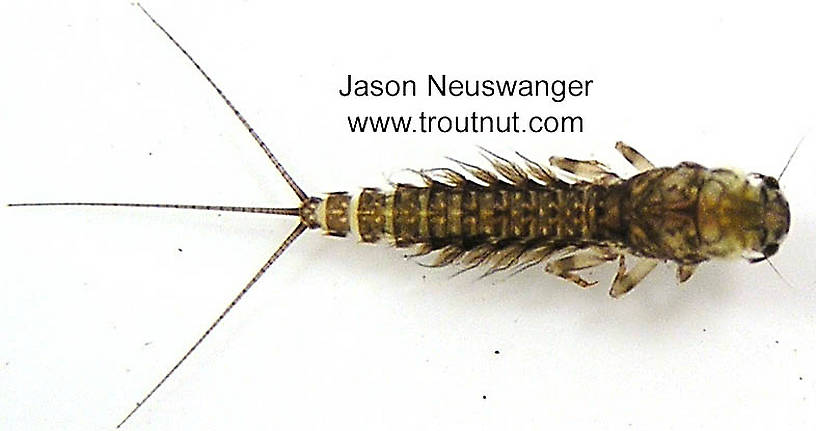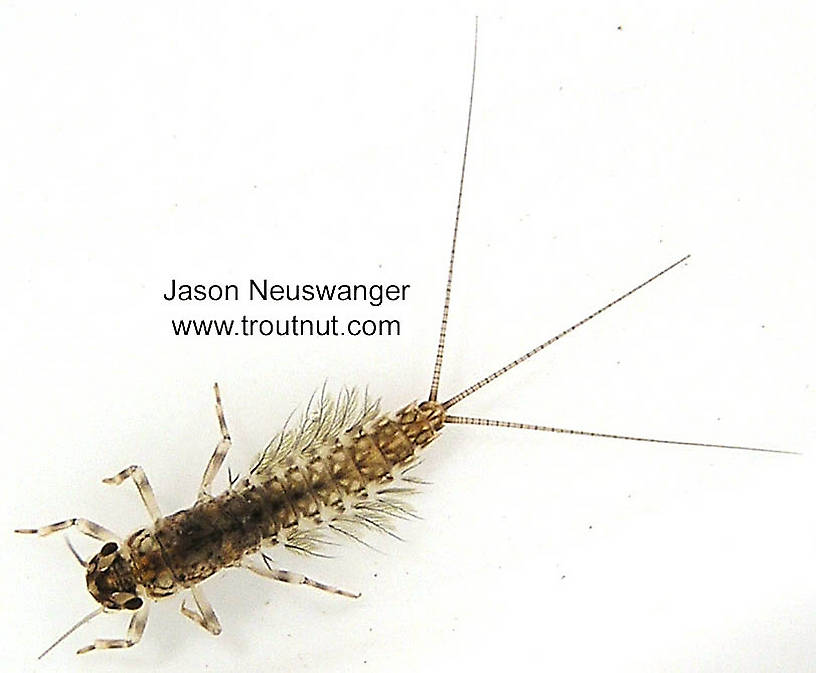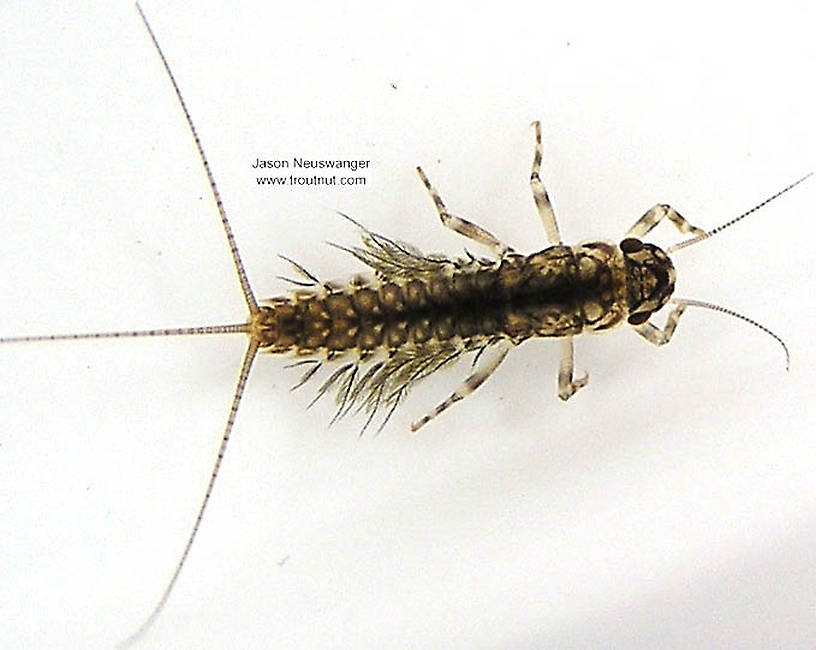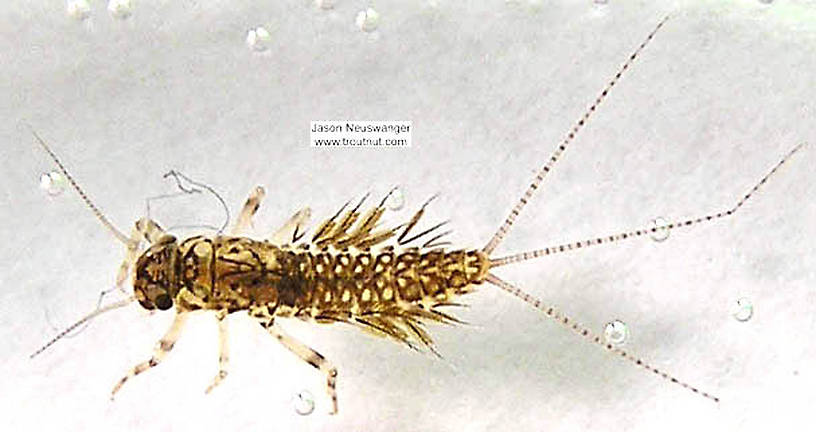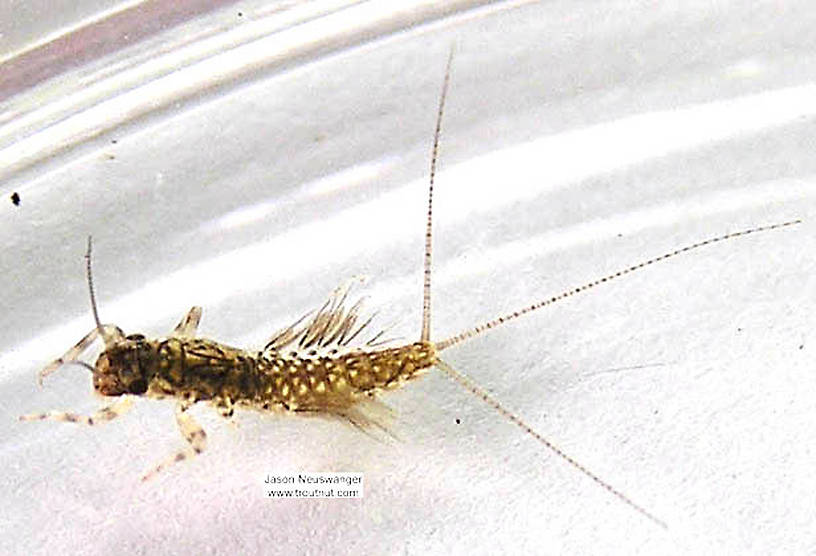
Salmonflies
Pteronarcys californica
The giant Salmonflies of the Western mountains are legendary for their proclivity to elicit consistent dry-fly action and ferocious strikes.
Featured on the forum

Troutnut is a project started in 2003 by salmonid ecologist Jason "Troutnut" Neuswanger to help anglers and
fly tyers unabashedly embrace the entomological side of the sport. Learn more about Troutnut or
support the project for an enhanced experience here.
Mayfly Genus Leptophlebia (Black Quills)
Leptophlebia mayflies do not generate superhatches, but their medium-large size and other properties make them a relevant part of the early season.
The information below was mostly discovered in Leptophlebia cupida, the most important species, but it is not known to differ in the others.
The information below was mostly discovered in Leptophlebia cupida, the most important species, but it is not known to differ in the others.
Where & when
Caucci and Nastasi in Hatches II tell an interesting story of their unsuccessful search for fishable populations of Leptophlebia nymphs. I have had better luck. They searched during the time when these nymphs are supposedly concentrated in schools in preparation for emergence; this may be exactly why they did not catch any. If the nymphs abandoned most of their habitat to gather in schools, they would be hard to find without some luck to stumble upon one of the schools. I have sampled good populations of Leptophlebia cupida from prime trout water during January and February, when they were more spread out.In 148 records from GBIF, adults of this genus have mostly been collected during April (31%), June (26%), May (20%), July (11%), and March (8%).
In 37 records from GBIF, this genus has been collected at elevations ranging from 3 to 8871 ft, with an average (median) of 2969 ft.
Genus Range
Hatching behavior
The duns usually emerge laboriously at the surface. Fred Arbona notes in Mayflies, the Angler, and the Trout that they swim to and from the surface for an hour before they emerge, a habit usually found in the Ephemerellidae family.
Some authors report that they occasionally crawl out onto shore to emerge.
Spinner behavior
Time of day: Afternoon and evening
Habitat: Medium to fast water
When they fall spent or get stuck on the surface during egg-laying, they are taken eagerly by trout. To my knowledge these spinner falls are never very intense, but they can get the trout rising. I have seen it on a little farmland brookie stream in Wisconsin.
Nymph biology
Current speed: Slow
Substrate: Silt, detritus, leaf drift
These nymphs are known for gathering in schools like little minnows and migrating for distances up to a mile through the slow shallows of a river before emerging. The word "migration" is overused in angling entomology books to describe the pre-emergence activities of many species, but this is one of the only mayflies for which the word is no exaggeration.
Some authors say that Leptophlebia nymphs are poor swimmers, but I have found the opposite. They are a notch slower than the true swimmer families, but they swim much faster and more gracefully than other crawlers or clingers like Ephemerellidae and Heptageniidae. If they were as slow as some suggest, their lengthy migrations would be difficult to believe.
Because the nymphs are especially tolerant of warm, slow-flowing water, they make excellent aquarium mayflies. They are good species to take to the science classroom, where they can survive in a goldfish bowl with a few leaves in it and are likely to emerge before the end of the spring term.
In the wild, the nymphs are mostly nocturnal.
Specimens of the Mayfly Genus Leptophlebia
1 Male Dun
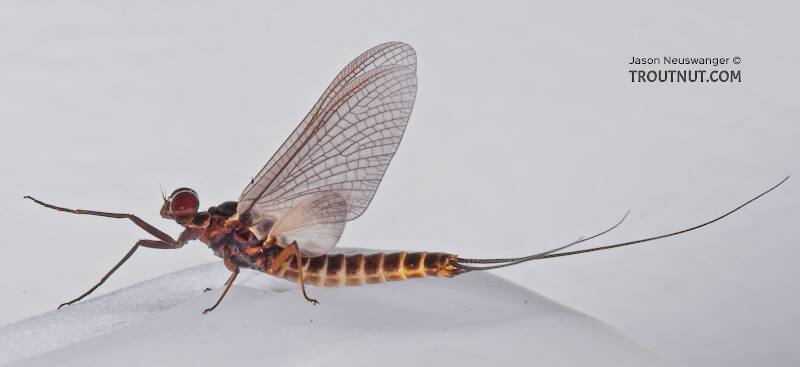
This Leptophlebia cupida dun was extremely cooperative, and it molted into a spinner for me in front of the camera. Here I have a few dun pictures and one spinner picture, and I've put the entire molting sequence in an article.
1 Female Dun
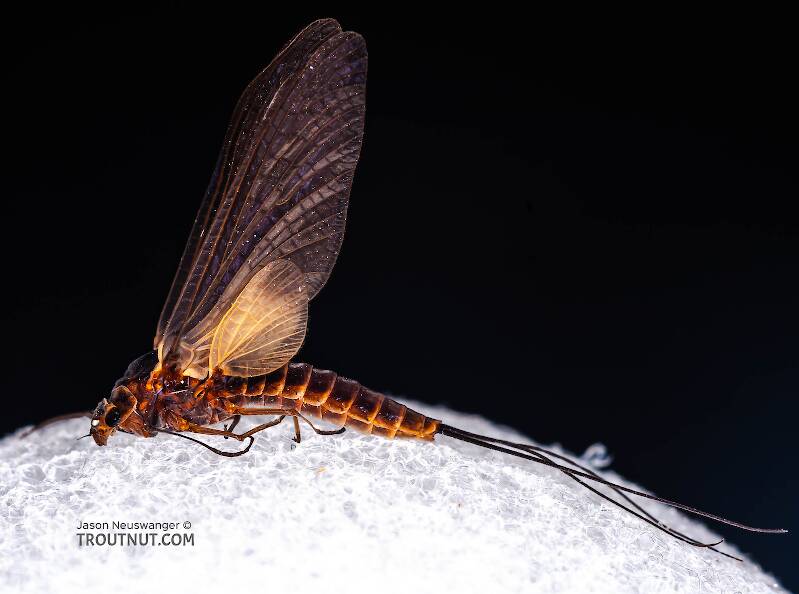
I collected this mayfly after user Al514 tipped me off to the presence of some Leptophlebia mayflies I didn't seem to have yet with his ID request of a male dun. This seems to be of the same species. I also collected a female spinner. Based on that spinner, I can tell that this is either Leptophlebia cupida or Leptophlebia nebulosa, but I can't tell which.
Unfortunately none of the specimens I collected made it through the hot, sunny day very well. So the pictures aren't great, but they're better than nothing.
Unfortunately none of the specimens I collected made it through the hot, sunny day very well. So the pictures aren't great, but they're better than nothing.
5 Female Spinners
13 Nymphs
Discussions of Leptophlebia
Steamntrout
Posted by Steamntrout on Jun 14, 2017 in the species Leptophlebia nebulosa
Last reply on Jun 14, 2017 by Steamntrout
Looking at Purdue's May Fly Central it shows nebulosa being found in Canada's Far North, North East and North West as well as USA's North East, South East & Far West.
Southeast Mayflies
24 replies
Posted by DarkDun on Nov 20, 2006 in the species Leptophlebia cupida
Last reply on Mar 4, 2007 by Taxon
This is one of the species that seem to be prevalent in our area of southwest NC. It emerges in March as I recall and again in October on certain streams. I would like to confirm that this next season.
Start a Discussion of Leptophlebia
References
- Arbona, Fred Jr. 1989. Mayflies, the Angler, and the Trout. Nick Lyons Books.
- Caucci, Al and Nastasi, Bob. 2004. Hatches II. The Lyons Press.
- Knopp, Malcolm and Robert Cormier. 1997. Mayflies: An Angler's Study of Trout Water Ephemeroptera . The Lyons Press.
- Leonard, Justin W. and Fannie A. Leonard. 1962. Mayflies of Michigan Trout Streams. Cranbrook Institute of Science.
Mayfly Genus Leptophlebia (Black Quills)
Taxonomy
Species in Leptophlebia
Leptophlebia bradleyi
0
0
Leptophlebia cupidaBlack Gnats
17
76
Leptophlebia intermedia
0
0
Leptophlebia johnsoniBlack and Olive Duns
0
0
Leptophlebia nebulosaEarly Black Quills
0
0
Leptophlebia pacifica
0
0
Species in Leptophlebia: Leptophlebia bradleyi, Leptophlebia cupida, Leptophlebia intermedia, Leptophlebia johnsoni, Leptophlebia nebulosa, Leptophlebia pacifica
1 species (Leptophlebia konza) isn't included.


